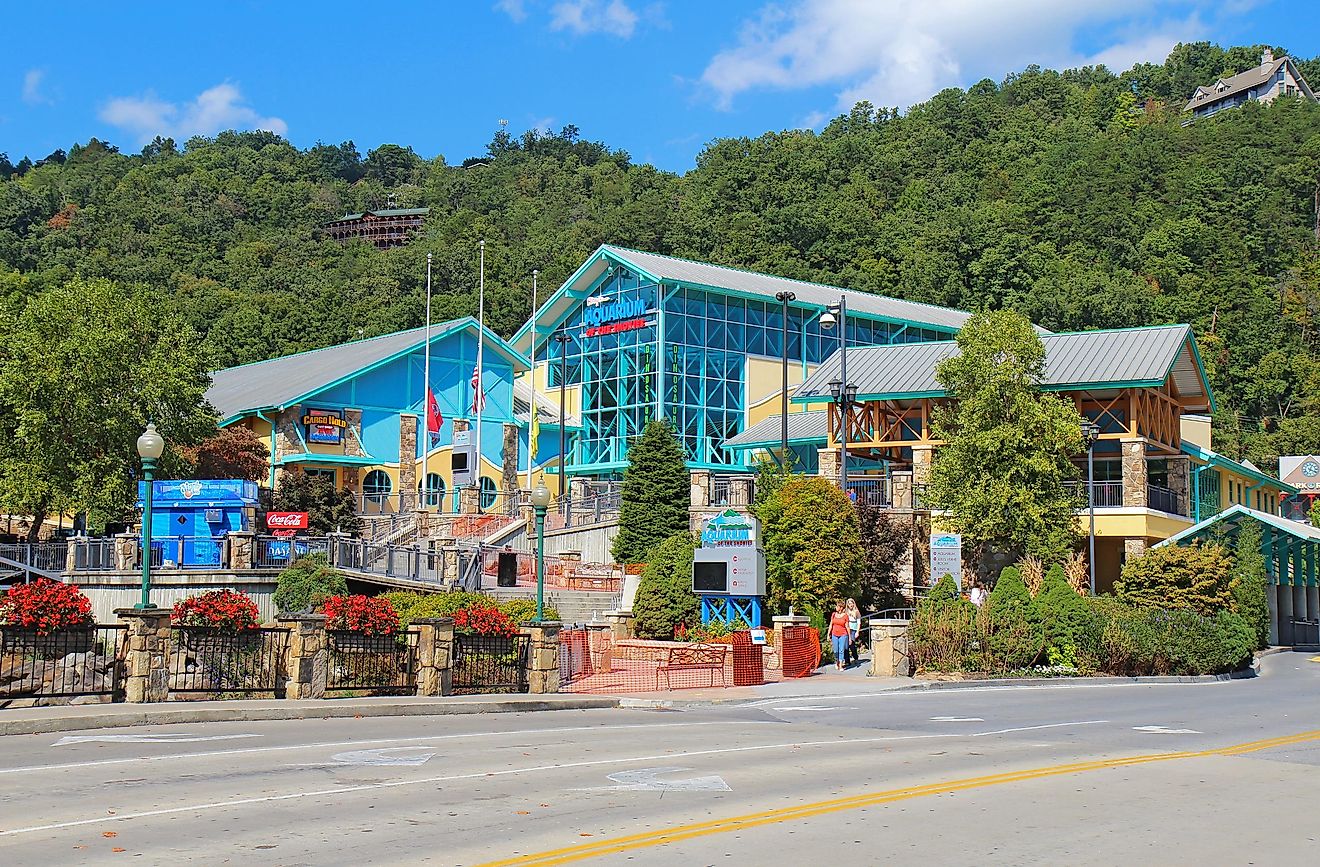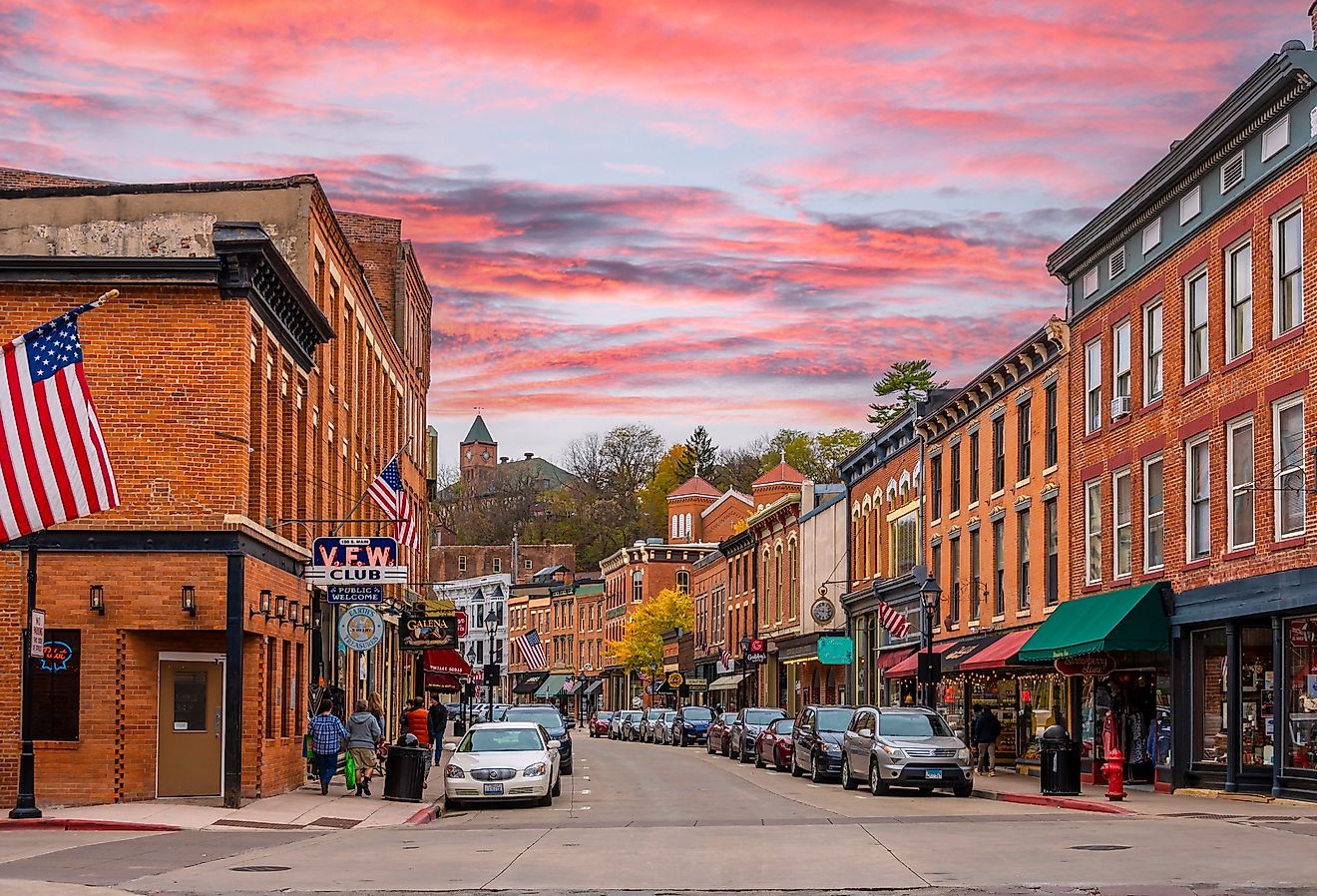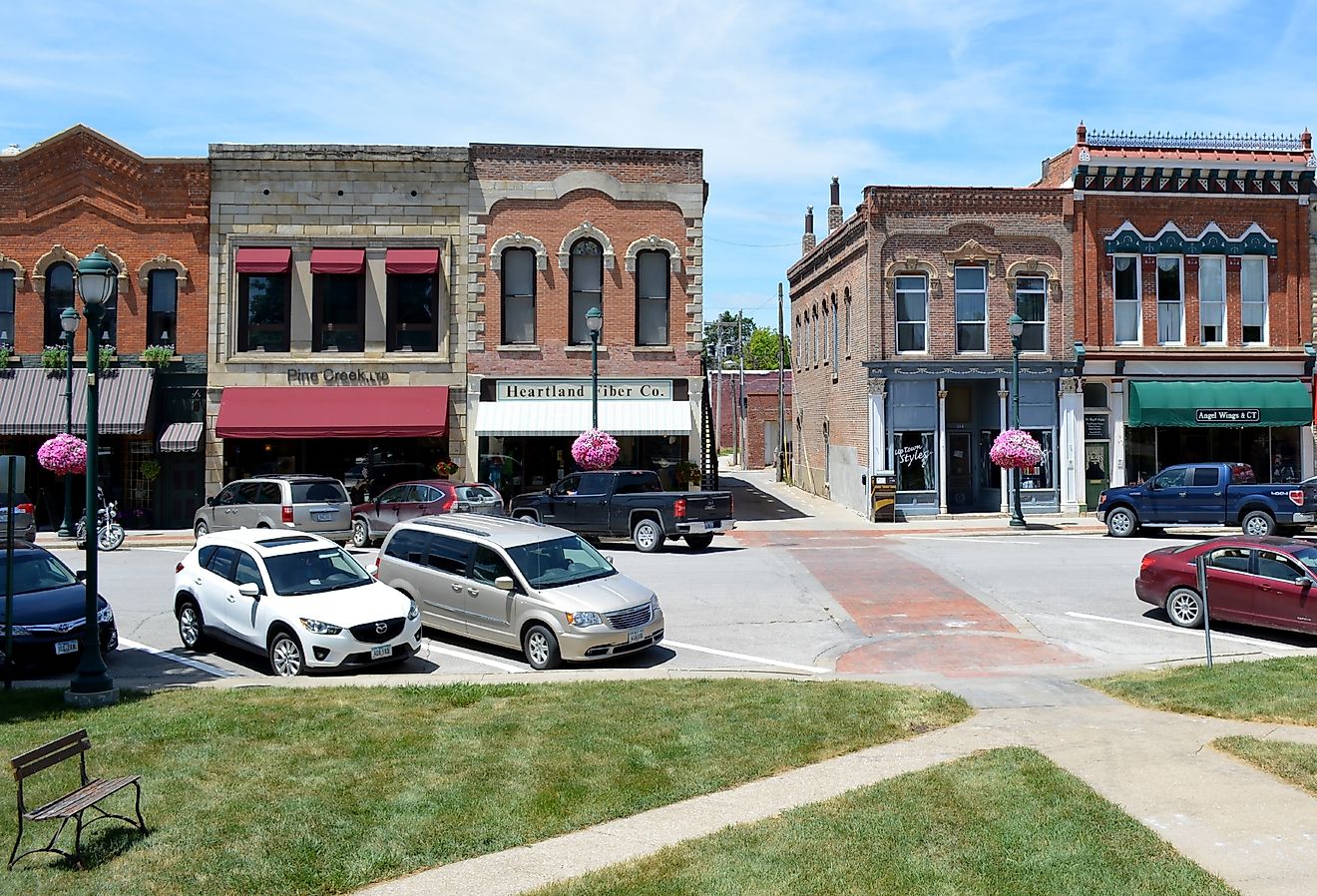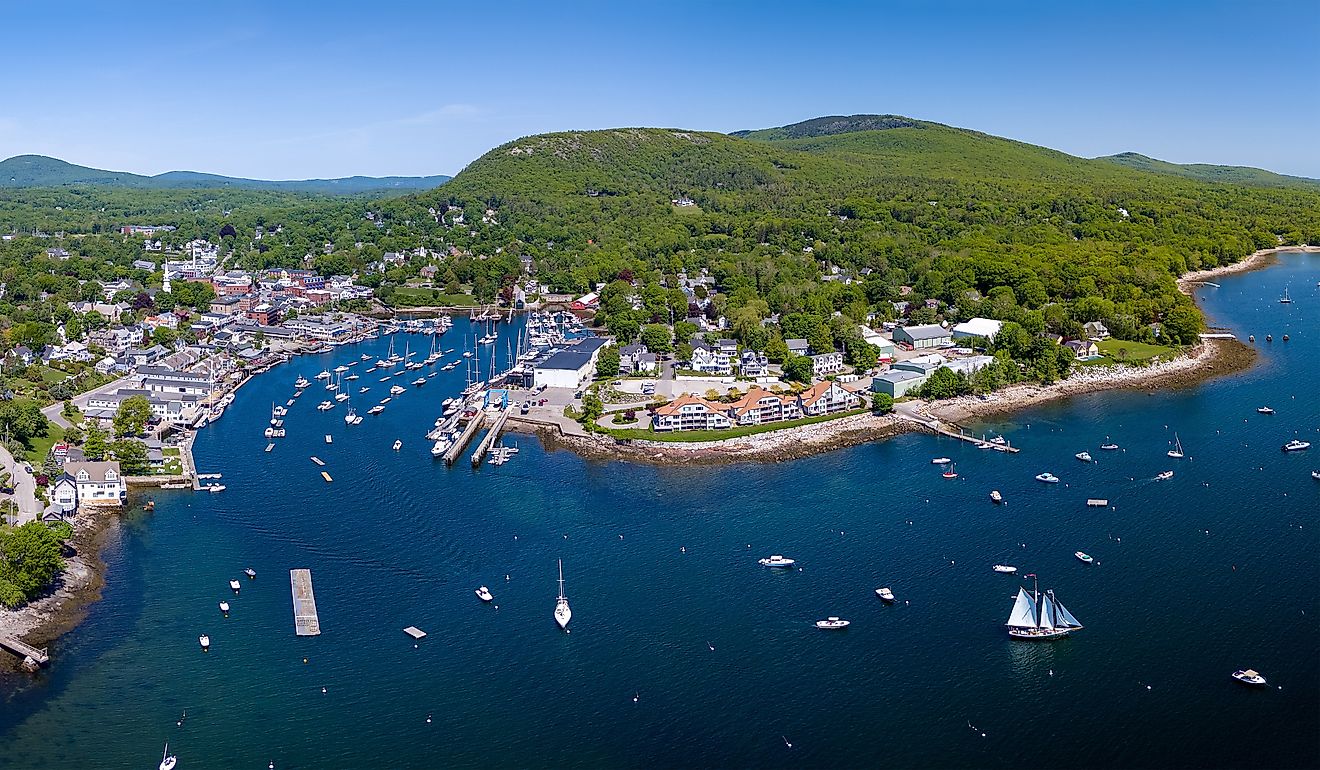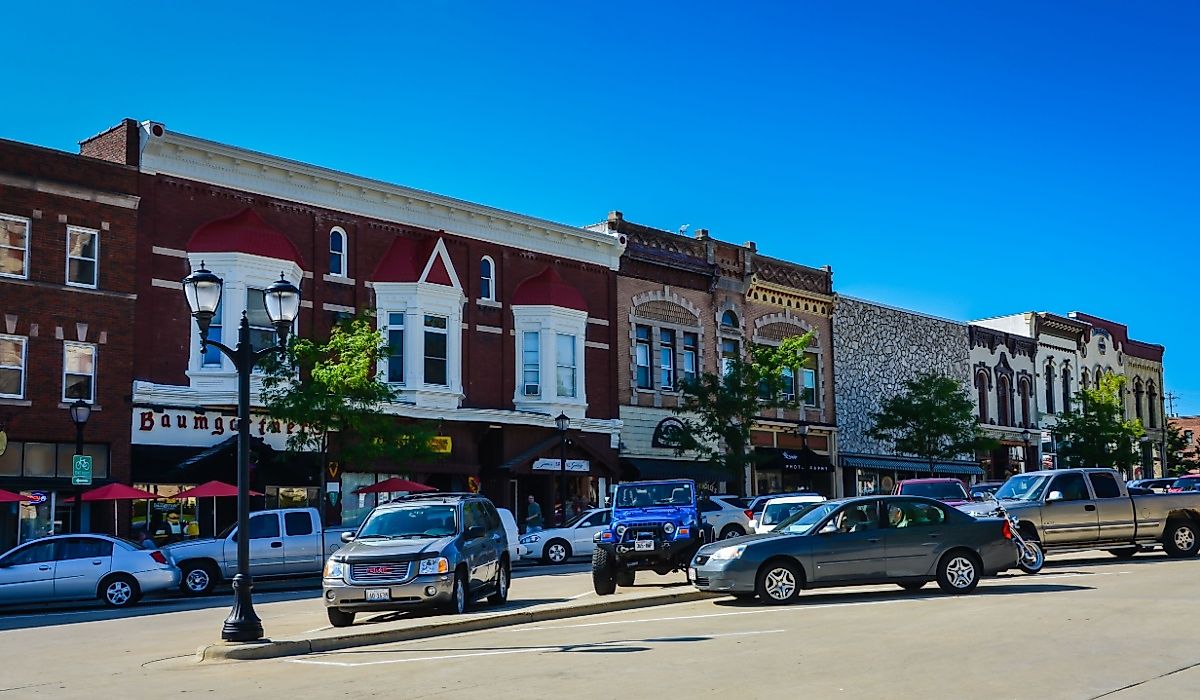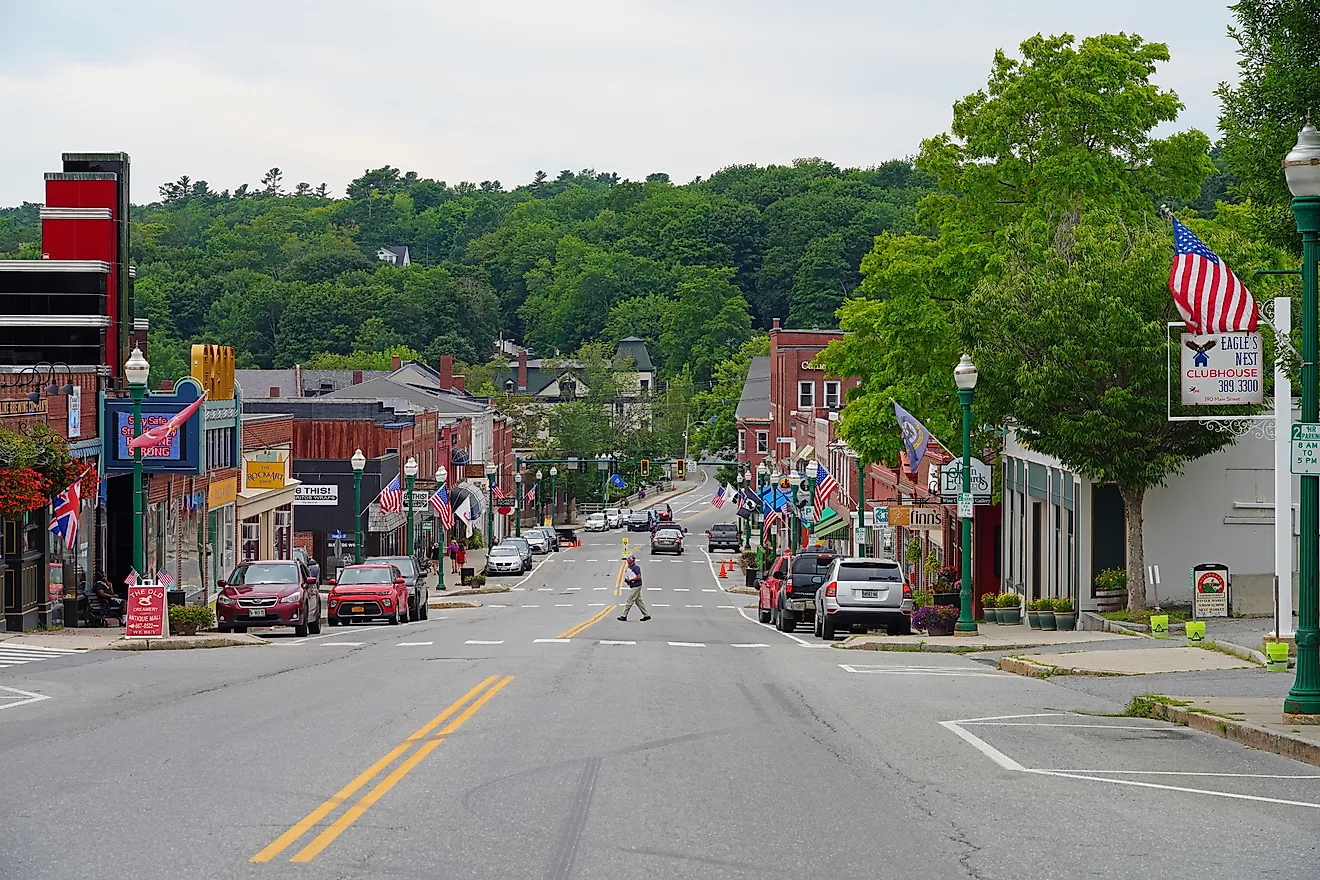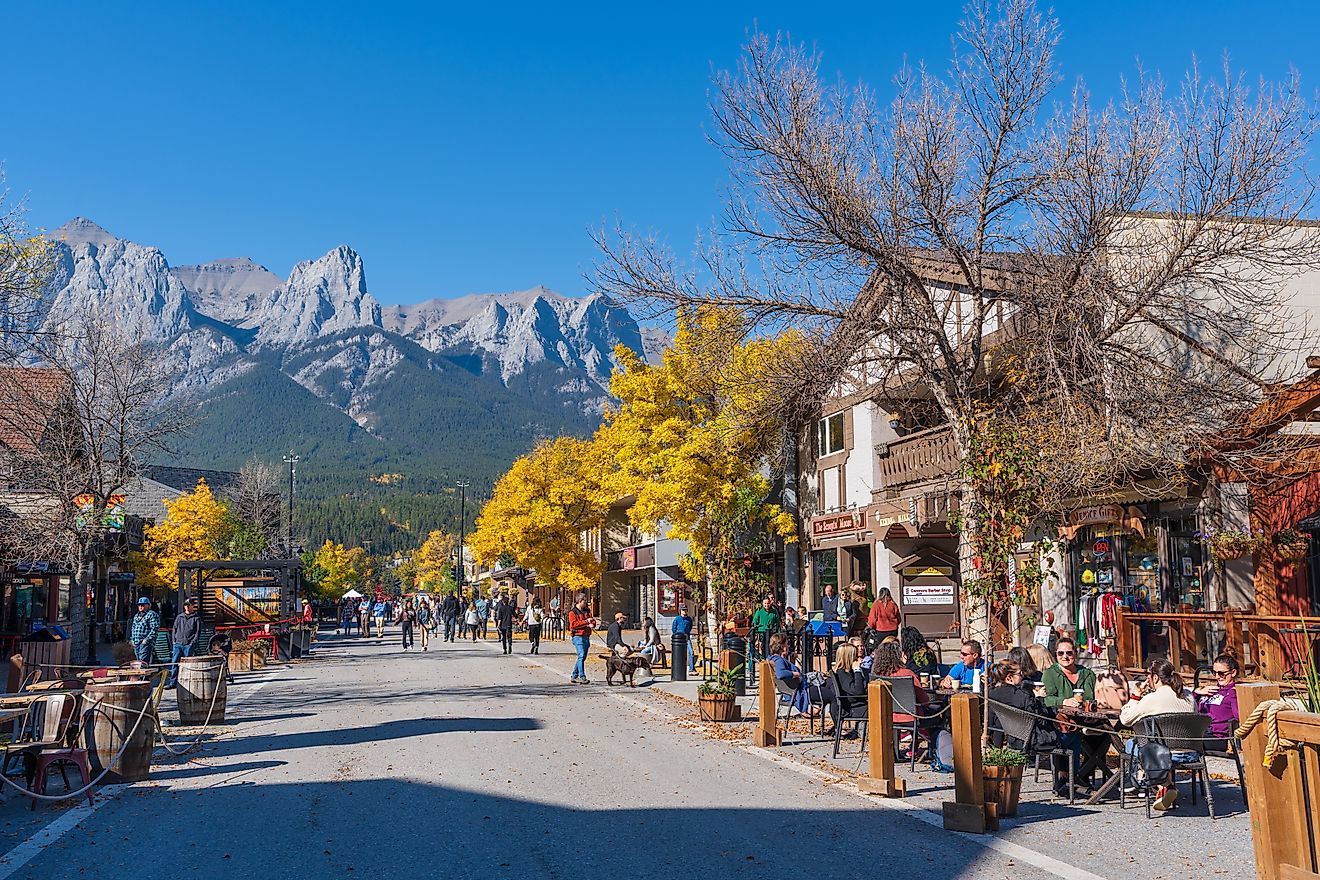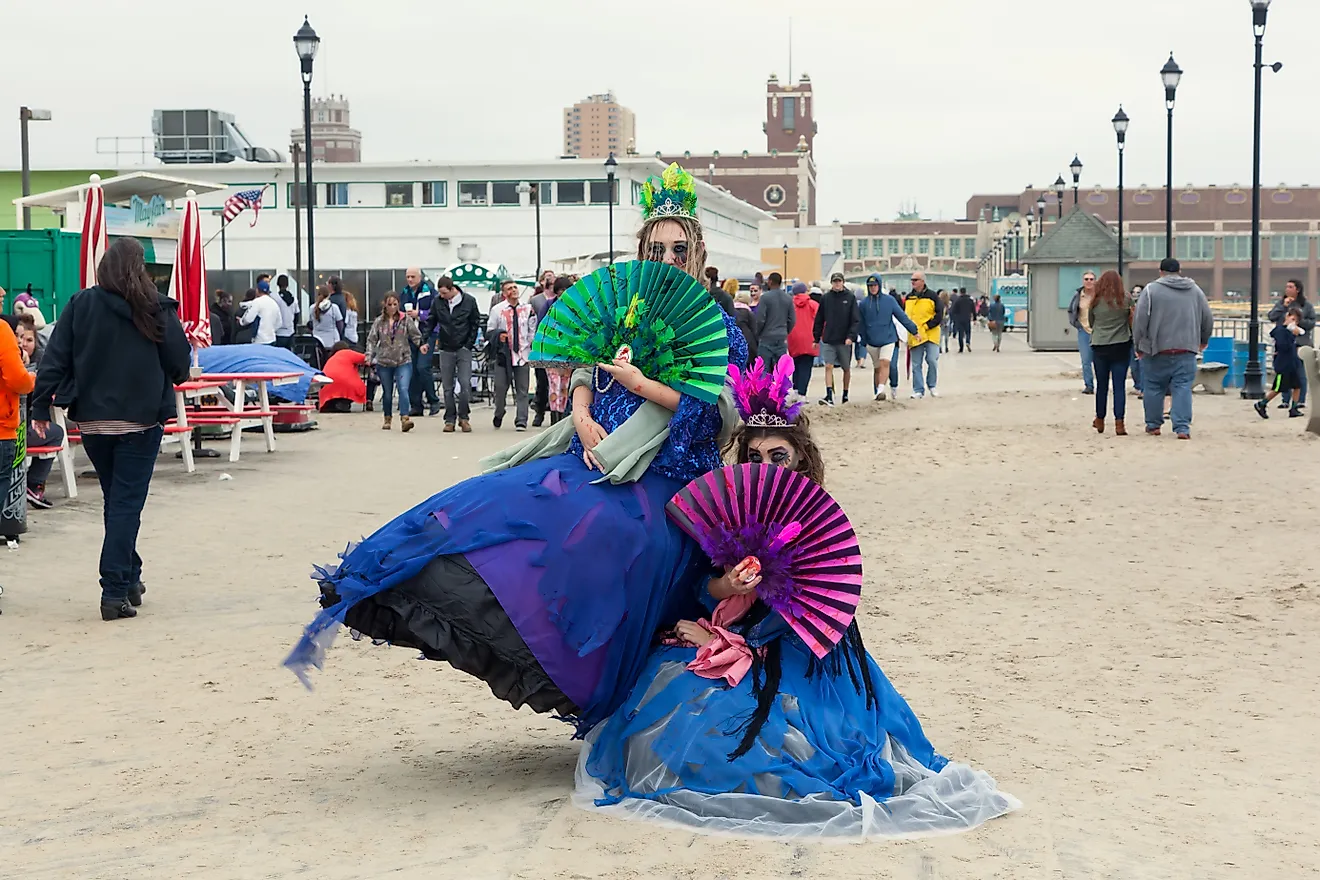
8 Most Beautiful Gothic Churches In Virginia
Given its rich colonial past, it’s little wonder that many of the most beautiful Gothic churches in Virginia come with plenty of history attached. Home to some of the first settlers from the Old Country, churches played an important role from the get-go, initially serving their settlements as places of worship, as well as gathering places. As the fledgling United States began to rebel against its English overlords, many of these churches became sanctuaries for revolutionaries as they plotted against the Empire. Less than a hundred years later, they found themselves at the center of another devastating conflict: the American Civil War.
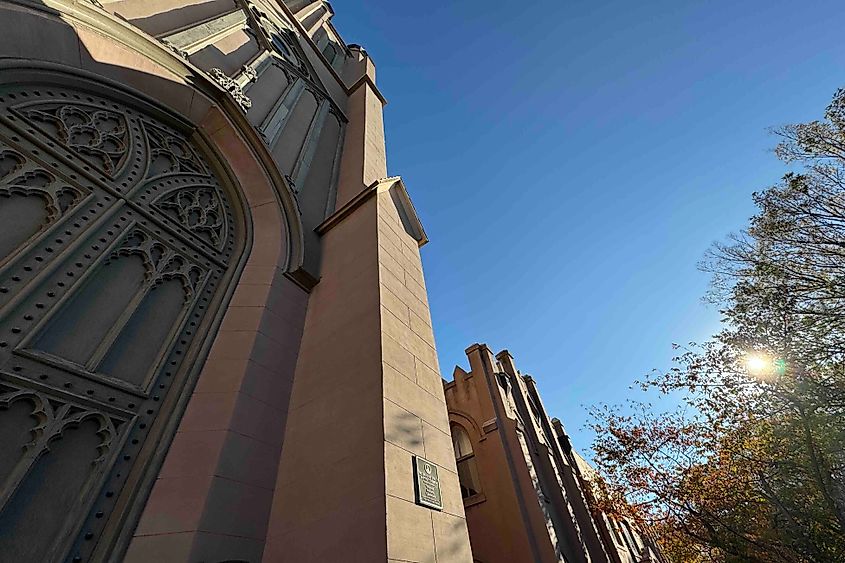
What, exactly, is a Gothic church? Typically defined by pointed arches and soaring spires, the state’s early churches came in several variants, from the traditional English Gothic style of the early colonists to the Gothic Revival movement that swept through America in the 19th century.
In addition to those easy-to-spot spires and arches, Gothic churches also feature attractive (and practical) ribbed vaults in their ceilings, as well as large windows enhanced with copious stained-glass. Still others mixed these elements with flourishes from other popular design movements, even borrowing from classic Greek and Roman architecture.
To understand more about these elegant structures and their fascinating histories, here are a few of our favorite Gothic churches in the “Old Dominion.”
Episcopal Church of the Epiphany, Danville
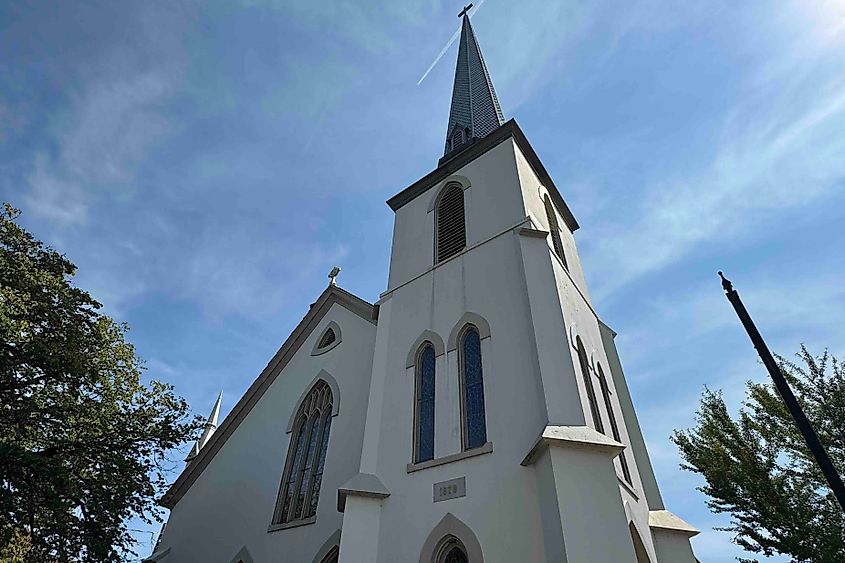
If you enjoy checking out historic places of worship, Danville’s the place to go. Known as the “City of Churches” for having the highest number of churches per square mile in Virginia, you’re literally spoiled for choice when it comes to religious structures to admire.
I had the pleasure of joining tour guide Joyce Wilburn for a look inside one of Danville’s most renowned places of worship, the Episcopal Church of the Epiphany. Known for its High Victorian Gothic architecture, it was constructed between 1879 and 1881 on Danville Main Street with a tall spire atop its square bell tower. The bell, a survivor from the earlier church, dates from 1867 and still rings strong to this day.

The earlier church also played a role in the final days of the Confederacy when Jefferson Davis and his cabinet attended services in 1865, just days after Robert E. Lee's surrender at Appomattox. Notable interior features include the sanctuary's stained glass windows, crafted in New York and impressive in their coloring and subject matter.
A side note: if you do want to see inside Dansville’s most beautiful churches, you’ll definitely need a tour guide to make the necessary arrangements (most churches are locked during the week). My guide, Joyce Wilburn, managed to introduce me to two great churches (including the Church of the Epiphany). And if you’re really lucky, she might also get you into one of the magnificent old mansions located on the town’s Millionaires Row.
Basilica of Saint Mary, Alexandria

Located only a short drive from Washington, D.C., the Basilica of Saint Mary in Alexandria was completed in 1826 and is Virginia's oldest Catholic church. Built in Gothic Revival style, it features two spires: one standing 140 feet tall, and a smaller one at 70 feet.
Built to replace an earlier chapel that George Washington is known to have visited and supported, it received its basilica designation from Pope Paul VI in 1974 in recognition of its historical significance to Catholicism in America.
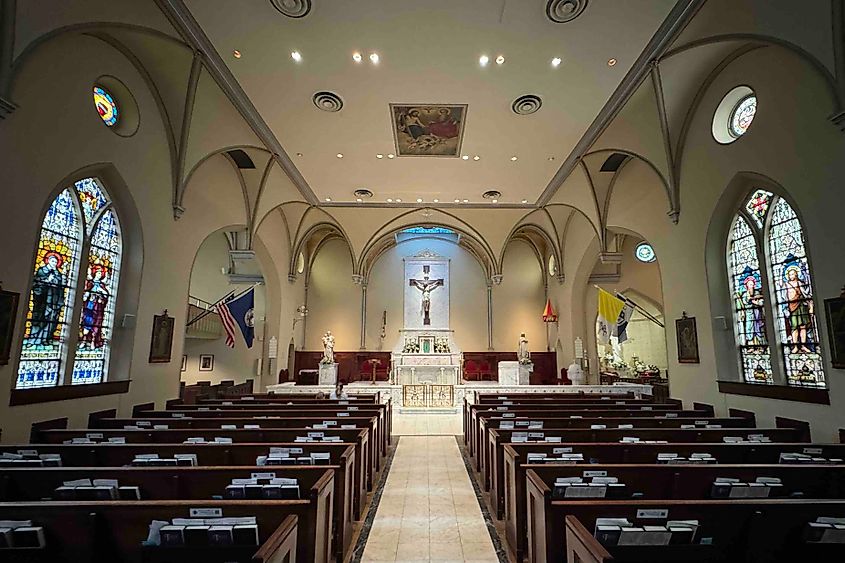
Be sure to wander to the back of the church, too. Here you’ll find the Old Meeting Place and the church's small cemetery. Here you’ll find the graves of Revolutionary War veterans, including Colonel John Fitzgerald, Washington's aide-de-camp at Valley Forge, as well as the Tomb of the Unknown Soldier from this same conflict.
During the Civil War, Union troops commandeered the church for use as a hospital. Legend has it that blood from surgical procedures remains visible on the sanctuary's pine floorboards beneath the present-day flooring.
Cathedral of the Sacred Heart, Richmond
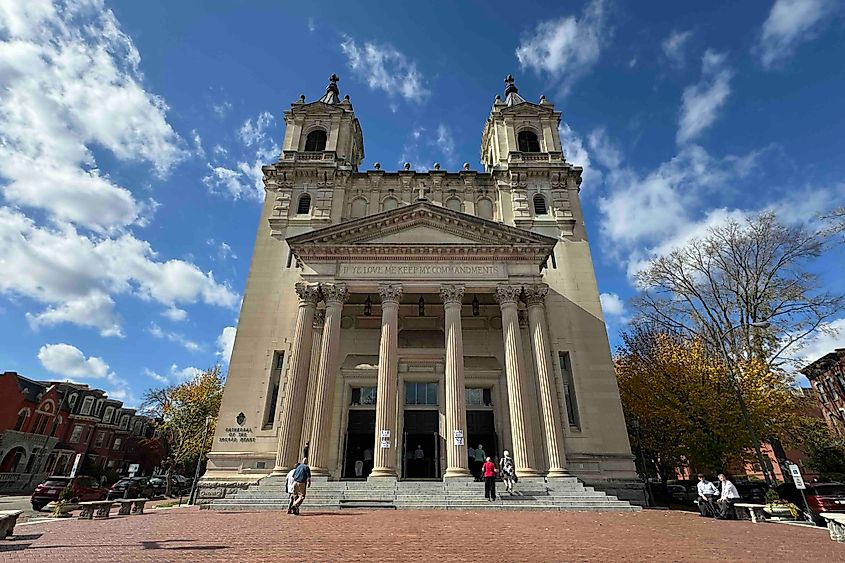
The Cathedral of the Sacred Heart in Richmond, the state capital, is undoubtedly Virginia's most imposing example of Gothic Revival architecture. Constructed between 1903 and 1906, it features a nave that soars to its ribbed vaulting ceiling, supported by clustered stone columns. The building's exterior features Gothic-style flying buttresses, pinnacles, and grotesques carved by stonemasons brought in from Italy.
The cathedral's interior contains one of the South's largest pipe organs, added in 2024 and boasting over 4,330 pipes. You’ll also want to check out the building's impressive stained glass windows.
Bruton Parish Episcopal Church, Williamsburg
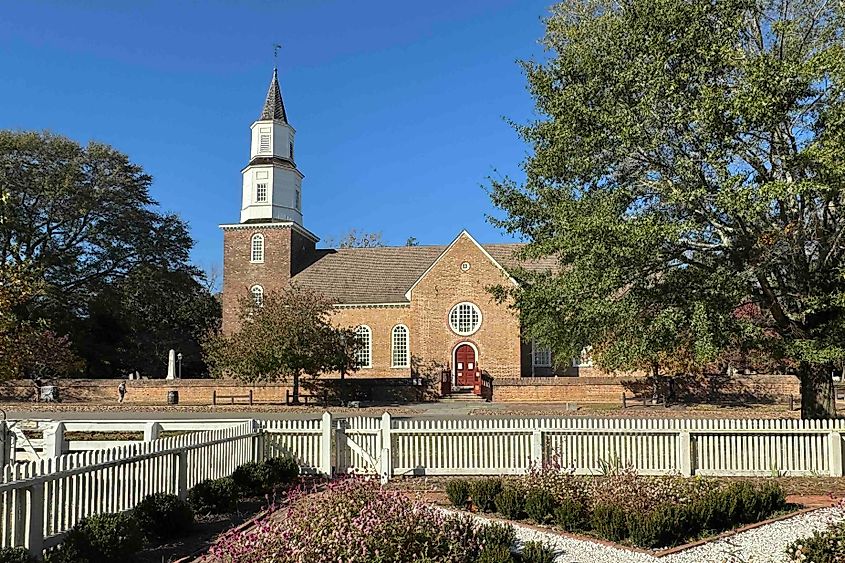
Located in the center of Colonial Williamsburg, Bruton Parish Episcopal Church is one of the country's most historically significant churches. Completed in 1715 from locally made bricks, though it predates the American Gothic Revival movement, it does incorporate several Gothic elements, including pointed arch doorways and elongated windows.
This quaint church served as the court church for colonial Virginia's second (and current) capital, with designated pews for the Royal Governor, Council members, and House of Burgesses delegates. George Washington and Thomas Jefferson were both known to have worshipped here and would have no doubt heard its "Virginia Liberty Bell," cast in 1761, ring out.
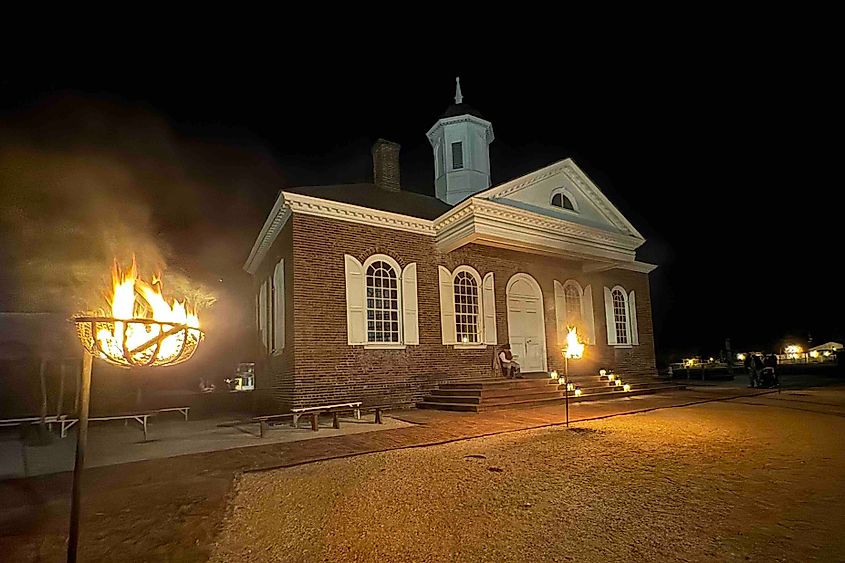
Except for a brief period during the Civil War when it was used as a makeshift hospital, this remarkable church has consistently offered worship services and can be visited as part of the wonderful Colonial Williamsburg. Other notable highlights include its bronze lectern, donated by Theodore Roosevelt in 1907 to commemorate the 300th anniversary of Jamestown's founding, as well as its substantial archives. The oldest continuous parish register in America, these records begin in 1662 and document the births, marriages, and deaths of colonial Virginia's most prominent families.
Visit the church after nightfall to partake in one of its memorable Candlelight Concerts. The experience is even more magical as Duke of Gloucester Street, on which the church is located, is lit by flames flickering from traditional bowl-shaped cressets, just as it would have been in the 1700s.
Freemason Street Baptist Church, Norfolk

One of Virginia's most architecturally significant buildings, Norfolk’s Freemason Street Baptist Church certainly has a great architectural pedigree. It was designed by Thomas Walter, the architect responsible for the huge cast-iron dome atop the United States Capitol in Washington, D.C.
Completed in 1850 in the elegant Gothic Revival style, notable features include its pointed arch windows, buttresses along the exterior walls, and a prominent bell tower. The interior still has its original pine floors and hand-carved wooden pews, as well as a classic Gothic vaulted ceiling, adding acoustics that make it a popular venue for musical performances.
Abingdon United Methodist Church, Abingdon
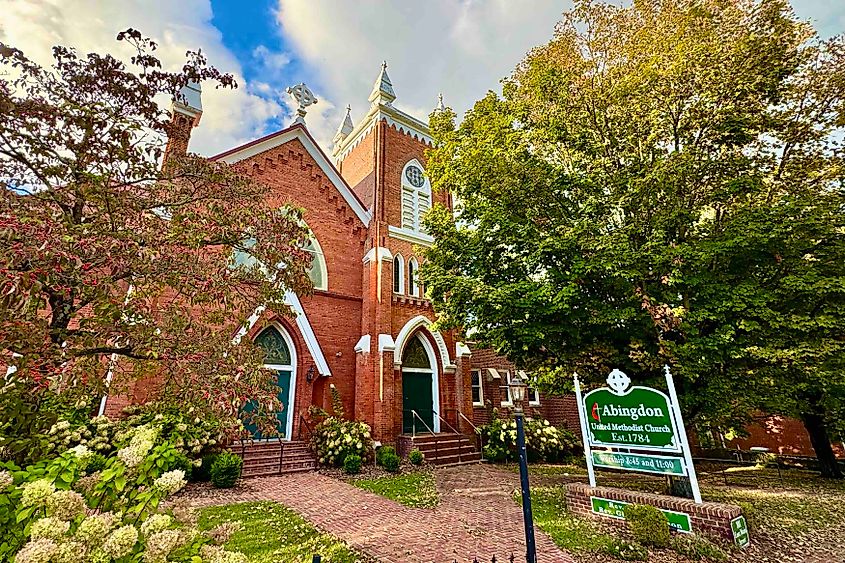
Constructed in 1925 in the Collegiate Gothic style popular in colleges across the US, Abingdon United Methodist Church is definitely a contender for the state’s most picturesque place of worship. Built of red bricks with Tudor-arched windows and decorative buttresses, its elegant square tower wouldn’t look out of place in parishes across England.
Built on the site of earlier churches dating back to around 1790, it’s home to one of the oldest Methodist congregations west of the Blue Ridge Mountains. And if you take a walk around Downtown Abingdon, you’ll notice that it was designed to blend in well with older landmarks like the Martha Washington Inn and Emory & Henry College.
Holy Trinity Episcopal Church, Onancock

Although small and slightly simpler in design compared to the other Gothic churches on this list, Holy Trinity Episcopal Church in Onancock is well worth visiting. Built in the Carpenter Gothic style, this Eastern Shore structure was completed in the 1880s using board-and-batten siding with a steep gabled roof and pointed arch windows. Simple, but effective.
The church's interior is also simple, and largely unchanged since it held its first service in 1886 (apart from the removal of the original coal stove). Outside, you’ll also see the neighboring Rectory building, dating from 1890.
Mount Vernon Methodist Church, Danville
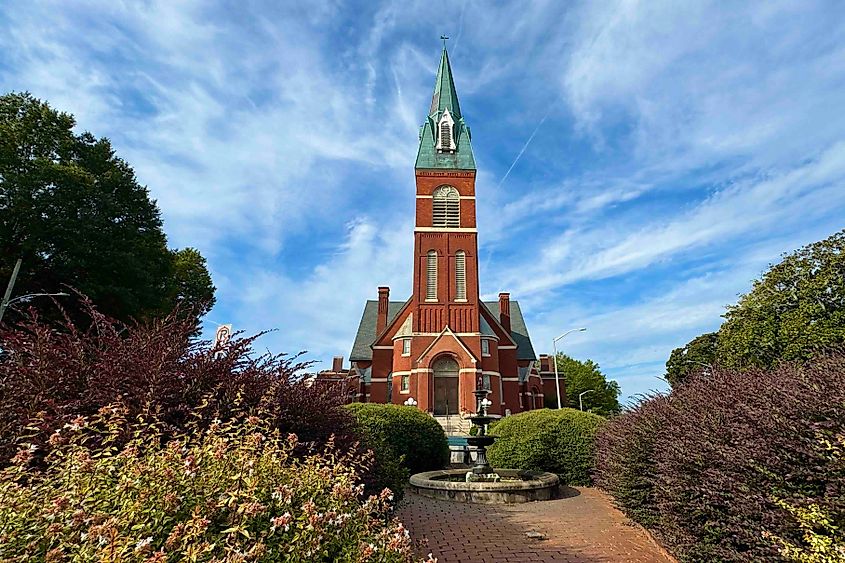
While exploring Danville, you can’t fail to be impressed by a striking redbrick church at the top end of Main Street. Featured on the town’s “City of Churches” plaque, Mount Vernon Methodist Church dominates Millionaires Row, an enclave of Gilded Age mansions, and was built in 1859.
Named after George Washington's famous Mount Vernon estate, it really does dominate the townscape here, parting the main route out of town into two distinct roads, complete with its own small park in front.

Notable Gothic Revival features include its corbelled cornices, Tudor-arched entrances, and its distinctive octagonal spire. The church's construction coincided with Danville's emergence as a major tobacco market and was funded largely by tobacco warehouse owners. Interior highlights include an 1860 organ and attractive stained glass windows.
The Final Word
Virginia's Gothic churches certainly stand out. And not just as testaments to the strong faith of their founders, but also to the rich history of the Old Dominion. Together, these eight beautiful churches represent the Commonwealth's remarkable journey from colonial outpost to one of the best states to visit in the USA, surviving revolutions and war along the way. Now it’s your turn to visit them.

